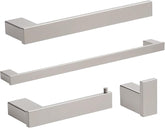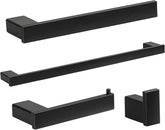Corrosion-Resistant Pipes: The Best Choice for Humid European Climates
Europe’s humid weather—from Mediterranean muggy summers to Northern Europe’s damp winters—wrecks regular pipes fast (rust, leaks, mold in 2–3 years). Corrosion-resistant pipes, though, stand up to moisture for 20+ years. Below’s a simplified guide to the best types and how to choose them.
Why European Humidity Destroys Regular Pipes
- Condensation damage: Warm moist air hits cold pipes, forming water that eats at joints.
- Mold growth: Damp pipes let mold grow into walls, breaking down material.
- Soft water wear: Most European regions have soft water, which leaches minerals from metal pipes, speeding up corrosion.
Top 3 Corrosion-Resistant Pipe Types for Europe
1. PEX Pipes (Budget-Friendly Pick)
- Why it works: Plastic (no rust), smooth interior stops mineral buildup, flexible for tight spaces.
- Best for: Small bathrooms, retrofits, underfloor heating.
- EU perks: Meets EN 15874 standards, fits low water pressure (common in old apartments).
- Top brands: Uponor (Finland), Rehau (Germany).
2. 316L Stainless Steel Pipes (Durable Luxury)
- Why it works: Chromium coating forms a protective layer; extra molybdenum fights salt (great for coastal areas).
- Best for: Luxury bathrooms, coastal homes (Lisbon, Athens).
- EU perks: Complies with EN 10312, 100% recyclable (ideal for eco builds in Sweden/Austria).
3. CPVC Pipes (Heat-Resistant)
- Why it works: Chemical-resistant (no reaction to soft water/mold), handles hot water (up to 93°C).
- Best for: Bathrooms with showers (Italy/Spain family homes).
- EU perks: Meets EN 1452-2; note: insulate in freezing areas (Norway/Sweden) to avoid cracking.
How to Choose & Maintain
-
Pick by climate:
- Coastal: 316L stainless steel/PEX.
- Northern Europe: PEX or insulated CPVC.
- Check EU certifications: Always look for EN 15874 (PEX), EN 10312 (stainless steel), or EN 1452-2 (CPVC).
-
Maintenance tips:
- Insulate cold pipes to stop condensation.
- Clean drains monthly (baking soda + vinegar) to prevent mold.
- Check for leaks yearly.




